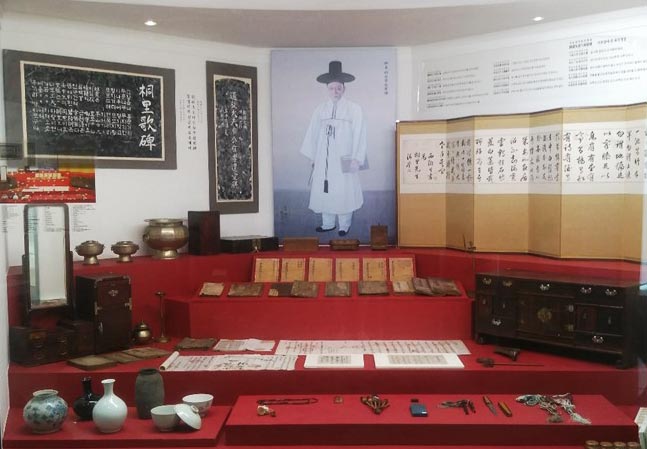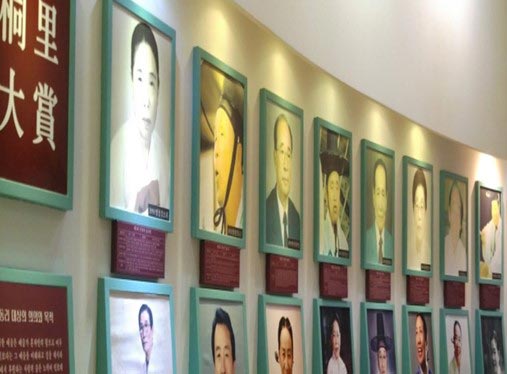The Tangible Validation, Preservation, and Promotion of South Korea’s Oral Tradition Pansori in the Gochang Pansori Museum
Pansori combines two Korean words: Pan, meaning “a place where people gather”; and sori, literally meaning “sound.” Essentially, Pansori is a passed-down oral tradition of epic stories and songs that were (and are) sung by a singer to the accompaniment of a drum, and along with the audience, who would provide the reaction. Thus, a triple act was formed, making every performance intimate and unique. The origin of Pansori is difficult to pinpoint by exact date and location, but the common understanding is that it began around the end of the 17th century through to the 19th century – during the Joseon dynasty (1392-1910) – around southwest Korea.
There was no “script” for Pansori recitals; they were very much impromptu performances. Stories were passed down by word of mouth until, eventually, they were recorded into literary compositions by a man named Shin Jae Hyo (1812-1884), who was a theorist and patron of the oral tradition. Shin Jae Hyo’s house in Gochang (in the North Jeolla Province) was used to teach and train Pansori singers. These very grounds, where Shin is known to have recorded and taught Pansori, are the present site of the Gochang Pansori Museum today. The annex where Pansori singers studied and trained became renovated and open to the public as part of the museum.
The Gochang Pansori Museum opened in 2001 to preserve and promote Pansori. The museum claims that its aim is to “collect, preserve, research, study, display, and analyse tangible and intangible cultural items related to Pansori in order to educate the general public and to provide people with opportunities to appreciate Pansori.” 1 At the core of the museum – in terms of its tangible evidence or validation of Pansori – are the twelve books of Shin Jae Hyo that can be seen as the first steps taken towards the tangible-isation of the intangible tradition, and also Shin Jae Hyo’s house that was an important physical location for Pansori trainees and singers. The museum, moreover, houses over 1000 artifacts related to Pansori, including personal possessions of Shin Jae Hyo as well as Pansori-related objects owned by renowned Pansori singers such as Kim So Hee.

Fig. 1: A display of Shin Jae Hyo’s books and possessions in the Gochang Pansori Museum (Photo by Minjae Zoh, 2013).
The Gochang Pansori Museum has used various methods not only to validate and preserve the oral tradition, but also to pay respect to the patrons of Pansori and to educate the public about it. Walking in, there is a huge board with a map, and numerous buttons are attached to specific locations within the map. Visitors are encouraged to press the button which holds recordings of Pansori recitals from different parts of Korea. Through this, visitors are able to hear the different dialects and styles of Pansori, depending on the region in which it was practiced. This display merges the tangible (buttons) and the intangible (audio). A large section of the museum is dedicated to the history of Pansori, and visitors are able to learn about the Pansori singers during the Joseon dynasty as well as how the oral tradition was preserved leading up to, during, and following the Japanese colonial period (1910-1945) in Korea. This was when the Japanese tried to “Japanise” Korea, meaning that there were intentional efforts to erase anything that was intrinsically Korean. The history room at the Gochang Pansori Museum portrays, through tangible records and images, how the Korean oral tradition was preserved and passed down amid times of threat to Korean culture. Small 3D artworks have also been used to depict scenes from Pansori recitals back in the Joseon dynasty for visitors to imagine what a Pansori performance would have been like. The more interactive parts of the museum are the audio booths containing recordings of Pansori recitals and also the volume-check room where visitors can shout into the microphone to check how loud they can shout. This is a reference to “tteukum” training that Pansori singers had to undertake in order to pierce through the sound of the marketplace back in the 18th century.

Fig. 2: The final display in the Gochang Pansori Museum (Photo by Minjae Zoh, 2013).
Central to the museum are the preserved 12 books of Shin Jae Hyo. Five of these books became registered and designated as Intangible Cultural Heritage in 2008 by UNESCO’s Convention for the Safeguarding of the Intangible Cultural Heritage. As visitors head towards the exit, there is a wall with photographs of Pansori singers throughout the years. A few points are communicated through this display. The first is that this oral tradition has been passed down from one singer to the next, and these photographs put a face to the intangible process. The second is that intentional blank frames have been put up to stress that Pansori is a living oral tradition; that the oral tradition goes on.
The Gochang Pansori Museum can be used to understand how the tangible has an important role in validating, preserving, and promoting intangible heritage, and vice versa. In many respects, seeing the books of Shin Jae Hyo, exploring the countless artifacts related to Pansori, and stepping on the grounds that were used to train Pansori singers in the past provide tangible evidence of the intangible tradition.
Minjae Zoh, HK Research Professor, Seoul National University Asia Center. Email: mz369@snu.ac.kr